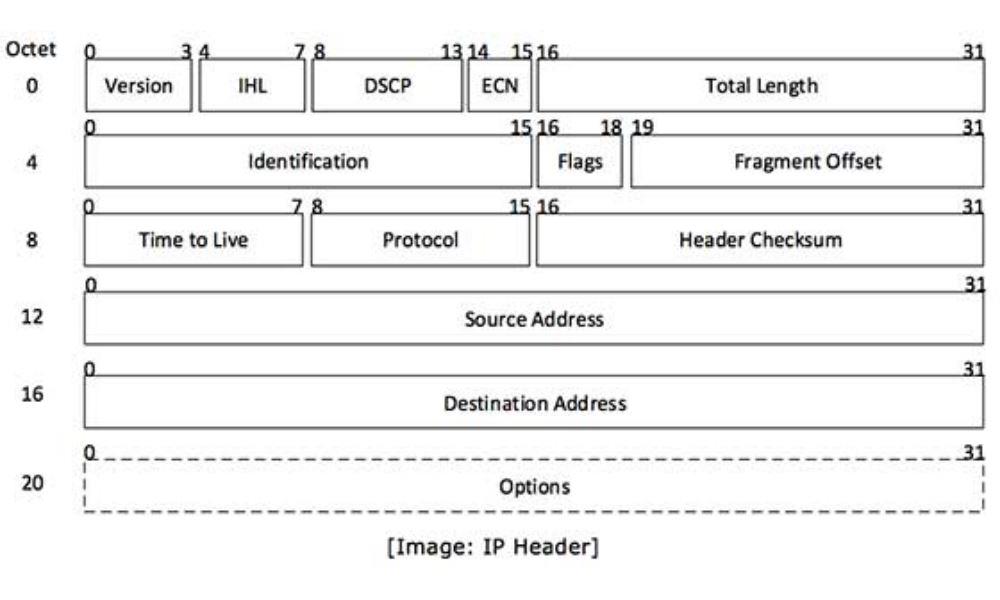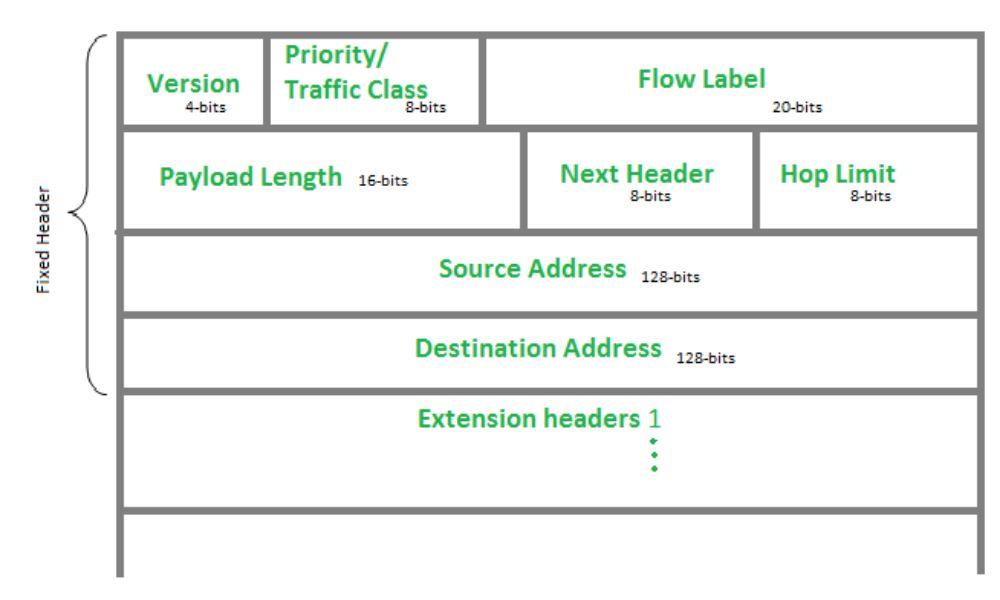“Transformation of IPV4 to IPV6 will not only energize the system but also eradicates the loopholes in the system”
This guide is focused to produce comparison on IPV4 Vs IPV6. Internet solely depends upon IP addressing system through which the communication is one between the connected devices but as a matter of fact, at the rate by which latest technological equipment are growing the current IP system (IPV4) is helpless to entertain every single device by assigning it a unique IP Address.
Experts say that IPV4 will be obsoleted soon out of the system instead IPV6 is the new system in place which will help the system to run on better parameters. IPV6 has more capabilities to give strength and accuracy to the system.
This article will focus on explaining the facts and figures about IPV4 and IPV6 also will state the reasons behind the inception of the new IP system and its future
Key Differences of IPV4 Vs IPV6
- IPV4 operated with checksum fields while Version6 doesn’t support checksum fields
- IPv4 uses numeric as an addressing system while IPv6 is to uses alphanumeric strings for addressing.
- IPv4 practice Address Resolution Protocol- ARP to plot a MAC address while IPv6 operates with Neighbour Discovery Protocol- NDP to plot a MAC address.
- IPv4 uses a dot(.)to separate binary bits while IPv6 uses a colon(;) to separate binary bits.
- IPv4 supports Variable Length Subnet Mask – VLSM while version 6 of IP doesn’t support VLSM.
- IPv4 has 12 header fields while IPv6 has 08 header fields.
- Broadcasting is supported In IPV4 while Version6 of IP doesn’t support broadcast.
- IPv4 works on a 32-Bit IP address whereas IPv6 operates on a 128-Bit IP address.
Differences IPv4 IPv6 Size 32 bit 128 bits Addressing method IP separated by a dot (.) IP bits separated by a colon(;) Header Field Length 20 40 Checksum Field Supports Does not support Number of classes It has 5 IP classes It can store unlimited IP numbers Configuration Configuration is mandatory when connecting a device to the internet Configuration is optional VLSM Supports VLSM Doesn’t Support VLSM Fragmentation It is done through sending and forwarding routes. Sender does fragmentation Network Configuration The network is to be configured manually or automatically. Autoconfiguration Address Mask specific network for host Not used. SNMP Use SNMP for system management Doesn’t support SNMP Security Application dependant security IPSec provides proper security Packet size 576 bytes 1208 bytes Address configuration Manual or automatic Autoconfiguration Mapping MAC Broadcast ARP Multicast Neighbour Solicitation Optional Fields supports Doesn’t Supports IPSec Optional Mandatory DHCP Provides access to users to connect to DHCP anytime It provides no such option as the addresses are permanent
What Is IPv4?
During the 70s, representatives of the DARPA organization, which is occupied with cutting-edge innovations, chosen to chip away at making a connection between PCs. Late in that decade, the advancement of the primary convention was finished. Nonetheless, the IP (Internet Protocol) went through certain progressions until IPv4 came out. It occurred in 1981.
IPv4 is the fourth form of IP; it is the premise of the Internet and sets up the guidelines for the PC networks working on the standard of parcel trade. This convention is liable for setting up associations between PCs, workers, cell phones dependent on IP addresses.
- Present structure – Most equipment & websites use IPv4,
- Uncomplicatedness – IPv4’s 32-bit dotted IP address is easy to read.
- Network Support – It’s more familiar to most of the users as it is highly supported by the network and devices therefore, in response to that IPV6 is still in place and supporting networks.
Cons
- The collapse of IPv4 – It has a limited capacity of providing unique IP for every device
- Rapidity –IPV6 is faster and reliable than IPV4 as per Akamai IPV4 Vs. IPV6 Speed Test.
- Network Address Translation & IPV4 – Complex configuration to use single IP for multiple devices in NAT
Data trade-in IPv4 is brought out through IP parcels. An IP bundle is partitioned into two huge fields: an information field that conveys helpful data and a header that contains all the convention usefulness.
IPv4 chips use a layer of the TCP/IP convention stack. The principle undertaking of the convention is to move information blocks from the sending host to the objective host, where the senders and beneficiaries are PCs that are interestingly recognized by IP addresses.
An IP address is fairly similar to visa information. It is composed of four numbers from 0 to 255. IPv4 addresses are frequently composed as four decimal numbers from 0 to 255, isolated by a dot. A base conceivable location is 0.0.0.0 and the greatest, 255.255.255.255.
A gadget without an IP address can’t be distinguished on the organization or trade data with different gadgets.
Key Feature of IP4
- The protocol works on the connectionless mechanism
- It creates a virtual communication layer on numerous devices.
- It needs minimum memory
- Can easily remember the addressing number – IP
What is IPv6?
IPv6 is the most recent form of the Internet Protocol, which recognizes gadgets across the web so they can be found. Each gadget that utilizes the web is distinguished through its own IP address together for web correspondence to work. In that regard, it’s very much like the road locations and postal divisions you need to know to mail a letter.
- Effective Routing
- Numerous Routing Routes
- Focused Local Address
- Larger space for Addresses.
- For every Prefix Unlimited Host available virtually
- Autoconfiguration
Cons
- Complex Network Topology
- Device up-gradation is needed
- Effect on Local Networks.
- No IP Scanning option
- Enable IPv6 before use.
- Long Addresses to remember.
The past variant, IPv4, utilizes a 32-bit addressing plan to help 4.3 billion gadgets, which was believed to be sufficient. In any case, the development of the web, PCs, cell phones, and now Internet of Things gadgets demonstrates that the world required more addresses
Luckily, the Internet Engineering Task Force (IETF) perceived this 20 years prior. In 1998 they made IPv6, which rather utilizes 128-digit addressing to help roughly 340 trillion, trillion, trillion addresses. Rather than the IPv4 address strategy for four arrangements of one-to-three-digit numbers, IPv6 utilizes eight gatherings of four hexadecimal digits, isolated by colons.
IPv6 addresses, the successor to IPv4, have all the same technical shortcomings. The potential problem is that it offers a 128-bit address, not 16 bytes like IPv4. That makes for 340 trillion trillion trillion addresses۔۔
Key Features of IPV6
- Advanced Header Format
- Big space to keep the address
- Organized Routing Infrastructure
- Effective Address Configuration
- IPsec Security feature
- QoS built-in support
- Advanced Protocol for Node Communication
Frequently Asked Question
Should I use IPv4 or IPv6?
What's better for gaming IPv4 or IPv6?
Can I use IPv4 and IPv6 at the same time?
Do I need to change both IPv4 and IPv6?
Does IPv6 increase Internet speed?
Should I enable IPv6 on my TV?
What advantages does IPv6 have over IPv4?
Does IPv4 and IPv6 affect Internet speed?
Will IPv4 coexist with IPv6?
Is IPv6 faster than IPv4?
Conclusion
We have analyzed both IPv4 Vs IPv6 are significant in the systems administration and correspondence in businesses. Subsequent to looking at IPv4 and IPv6 over a scope of elements, it very well may be reasoned that everyone has its own upsides and downsides.
With the depletion of the RIPE NCC’s excess pool practically around the bend, the requirement for organizations to receive IPv6 is clearer than any time in recent memory. However, moving to IPv6 has demonstrated to be a hard sell.
Organization administrators are accustomed to working with IPv4 and many might be embracing a ‘keep a watch out’ approach. This is particularly the situation for networks that vibe they have enough IPv4 locations to last them for the short term.
While it may appear to be simpler to stay with IPv4, it will get logically harder to do as such. IPv4 assets have nearly been extended as far as possible as Internet organizations associated an expected 4.5 billion clients and a few billion more cell phones utilizing just 4.2 billion IPv4 addresses.
As a distinct difference to this, IPv6 has 340 trillion, trillion, trillion addresses accessible to utilize. This opens gigantic additional opportunities for network setups, productivity, and advancement, also decreasing reliance on the undeniably costly and testing IPv4 market.

